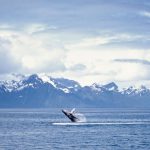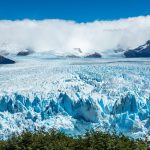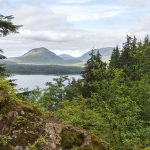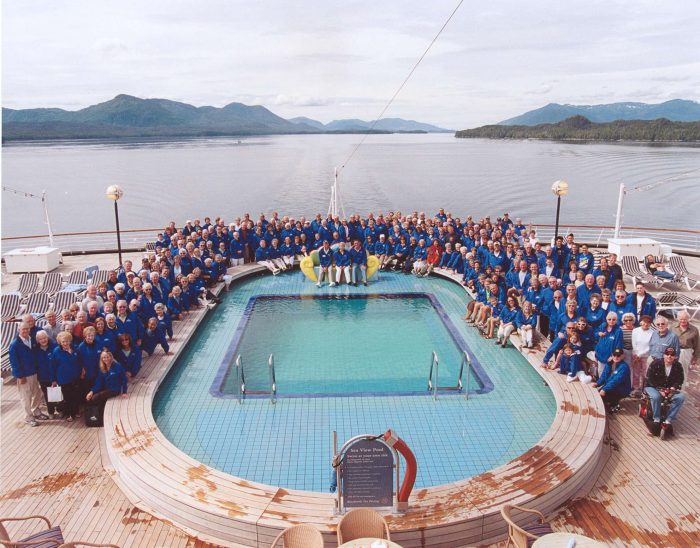In search of one of nature’s greatest spectacles, author Jessica Colley sails through Alaska’s Inside Passage with Holland America Line to watch glaciers crumble before her eyes.
“If you hear it, it’s already too late,” said the glacier expert. From the deck of a boat, my eyes were glued to the expanse of blue all around me.
“You see, the sound of ice cracking reaches your ears after the event,” he explained. “Once you hear the cracking sound, you probably missed it.”
I switched gears – relying on my eyes instead of my ears to witness one of the most coveted experiences of cruising in Alaska: ice calving, or the breaking off of massive chunks of ice at the edge of a glacier.
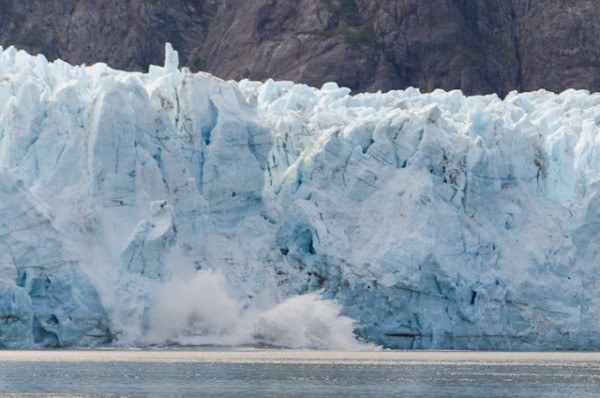
My eyes darted from one frozen surface to the next, trying to detect movement. Surprisingly, it came from the water; a playful otter with his long, signature whiskers popped up next to the boat. Floating on his back, he looked up at me with his feet humorously sticking out of the water. While watching his curious face, I heard a thundering crash. I turned, but it was too late. All that was left was a splash.
To see some of nature’s greatest phenomena with my own eyes, I signed up for the Holland America Line 7-Day Glacier Discovery Southbound Journey. I wanted to witness the wide spectrum of blue that refracts throughout the dense ice, to be on deck when ice tumbled off the glacier into the water below, to sip a drink with a chunk of ice that had been fished off the side of the boat right in front of me. (Glaciers are fresh water, after all).
My journey began in Seward, near Anchorage. Alaska cruises set sail between May and September, with the high season concentrated in the heart of June and July. These are the warmest, longest days when glaciers are actively calving. Though prices in the shoulder season of May and September are tempting, many travelers that want to increase their chances of seeing the most active glaciers choose to stick to June and July departure dates.
On the southbound journey, Glacier Bay National Park is first up on the itinerary. This park is a UNESCO World Heritage site, about the size of Connecticut, and as I was about to witness, constantly changing.
If the park had a personality, it would be a flirtatious one. Drama and ice are flamboyantly on display, from the water full of ice shards in every shape, size, and hue of white and blue to the face of the glaciers, cracking and sending massive chunks of ice crashing into the water below.
Park Rangers are on board the ship to answer any and all questions; I learned to keep my eyes on the glaciers while listening to their answers. With more actively calving glaciers than any other destination on the globe, I didn’t want to take a chance and miss the park’s grand finale.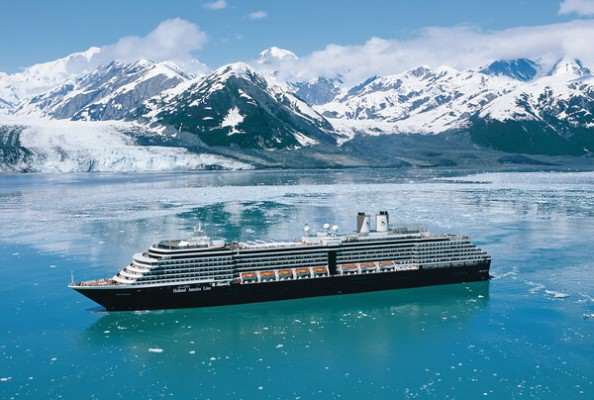
Fellow travelers were enthusiastic about spotting bald eagles during a stop in Haines or dogsledding during a docking in Juneau, but my enthusiasm was mostly reserved for the glaciers. After a final stop in Ketchikan (where a flightseeing trip over the deep fjords of the Misty Fjords National Monument is a popular excursion) I was thrilled to spend the day on the water, sailing through the iconic Inside Passage.
After the intense beauty of the Glacier Bay National Park, I wondered if this famous sea lane would live up to its reputation. The Inside Passage is frequently named one of the most scenic stretches in the world, particularly because of geography that allows boats to sail up close to the passage’s steep walls. This proximity grants an up close and personal perspective on the glaciers, mountains, and sea.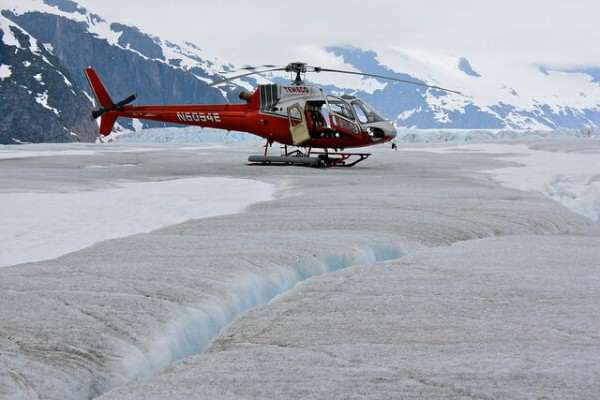
Though the Inside Passage is often buzzing with activity – its beauty attracts many visitors – most travelers on my cruise watched in silence as we sailed through, simply leaning on the railing and taking it all in, trying, I imagined, to find words for the colors of the glaciers. Turquoise? Cerulean? Aquamarine? None of them seemed quite right.
The multiple personalities of the glaciers couldn’t be captured in a single word: not cobalt, not ultramarine, not sapphire. The glaciers were bright white one moment, and almost teal the next.
They were still one moment, and missing an appendage the next. Blink — or be momentarily mesmerized by the face of an otter — and you just might miss it.
